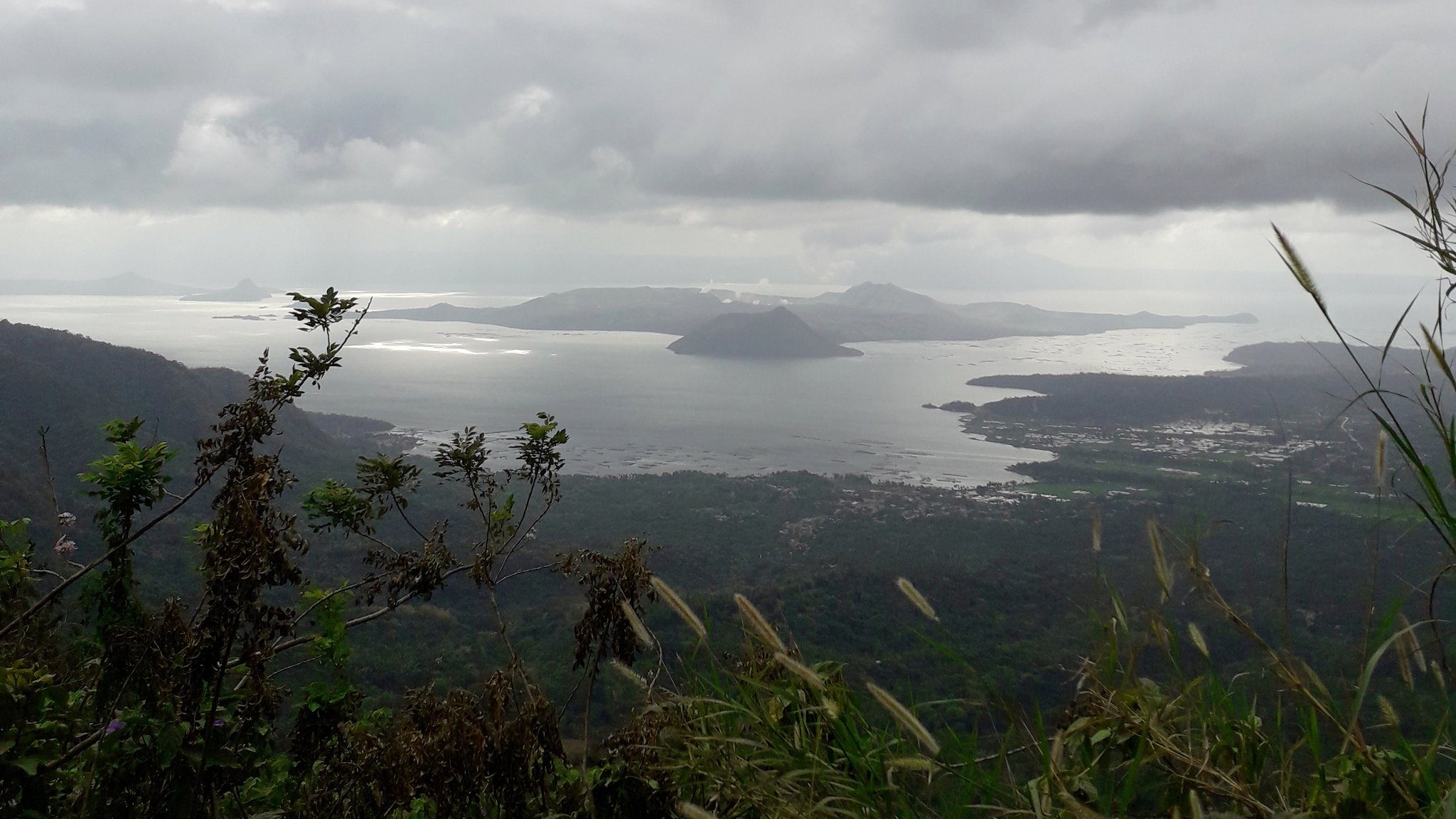SUMMARY
This is AI generated summarization, which may have errors. For context, always refer to the full article.

MANILA, Philippines – More than 10 days since the Taal Volcano started erupting, hundreds of thousands of people have been displaced, most of whom are staying in evacuation centers in Batangas, Cavite, Laguna, and Quezon.
A hazardous volcanic eruption remains imminent, according to state volcanologists, despite an apparently quieter Taal the past few days. (READ: Low sulfur dioxide from Taal, but not time to relax yet)
Geologist and Philippine Nuclear Research Institute Director Carlos Arcilla said in a roundtable discussion on Wednesday, January 22, that communicating the hazards of an impending violent volcanic eruption is always a challenge but a necessary undertaking, especially to the public.
“That’s not an easy thing to do. Unlike sa bagyo, pagkatapos ng bagyo kasi, a few hours after na dumaan, may makikita kang signs na wala na. Tsaka nararamdaman mo na wala nang hangin so alam mo, okay na. In geologic events like earthquakes, they will last for only, at most, a few minutes. P’wede ka magkaroon diyan ng aftershocks, so the time frame of the incident is narrow,” he said.
(That’s not an easy thing to do. Unlike in typhoons, after a typhoon, a few hours after it passes through, you will see signs that it’s gone. And you feel that there are no more winds, so you know it’s already okay. In geologic events like earthquakes, they will last for only, at most, a few minutes. There can be aftershocks, so the time frame of the incident is narrow.)
He added: “But for example, in Taal Volcano, in 1754, it erupted for several months. So paano ang mga nasa evacuation center (So what happens to those in evacuation centers)?”
Arcilla also said that it is necessary to understand the motivation and concerns of the people during these times.
“Someone from NDRRMC said before that ‘How to make people afraid’ is supposedly the most difficult part because you can get complacent. So the Talisay vice mayor, I can understand. If I were in Agoncillo and my favorite dog was there, I’d probably go in. You have to understand where they’re coming from,” Arcilla said in a mix of English and Filipino.
Talisay Vice Mayor Charlie Natanauan earlier encouraged residents to return to their homes and start cleaning up even if the municipality is within the Taal Volcano’s 14-kilometer danger zone. He also demanded the Philippine Institute of Volcanology and Seismology (Phivolcs) to change its “opinion” about Taal so residents could return to their homes.
A Phivolcs official said that while they respect Natanauan’s “feelings” as he is “under so much stress,” they are also “firm” in their science.
Arcilla on Wednesday said it is important to have people who can better explain the hazards to the public, especially to the affected communities.
“Alam mo ang nakita ng mga tao noong makakita sila ng tinamaan ng pyroclastic flow? Para silang na-tocino. Ganoon ‘yung description (You know what people saw when they saw something that was hit by pyroclastic flow? It was fried like a tocino. That was the description.)” he said.
One of the hazards of the Taal Volcano is what we call the base surge. (READ: FAST FACTS: What you should know about Taal Volcano)
According to the United States Geological Survey, a base surge is a “ring-shaped cloud of gas and suspended solid debris that moves radially outward at high velocity from the base of a vertical eruption column.”
A base surge carries hot gases, ash, and rocks traveling horizontally at speeds of 60-80 kilometers per hour – something that could kill humans instantly.
Enough warnings, education key to reducing disaster risk
Meanwhile, National Disaster Risk Reduction and Management Council Spokersperson Mark Cashean Timbal explained that the Phivolcs gave enough warnings to the communities surrounding the Taal Volcano well ahead of time.
“In the case of Taal, before Taal’s alert warning escalated, the community there was already warned. In fact, when it came to warnings, the community there on the Taal Volcano island was prioritized. Only after the community received the warning did Phivolcs give a warning at the national level to reiterate the warning to local governments, so Phivolcs was really proactive. As a proof, no one died in the escalation of the volcanic activity on the island,” Timbal said in a mix of English and Filipino.
Timbal noted that the Phivolcs also conducted regular information and education campaigns on volcanic hazards in the communities surrounding the volcano, which helped the local government units to evacuate the people ahead of the volcanic activity.
“Phivolcs [has] established ties [with] the communities. So the communities see the scientists not as outsiders but as friends and members of the communities,” Timbal said. – Rappler.com
Add a comment
How does this make you feel?
There are no comments yet. Add your comment to start the conversation.